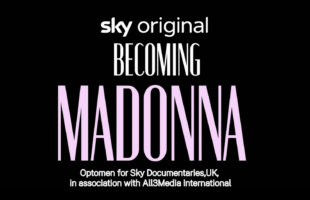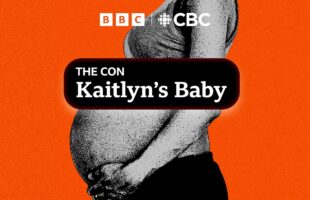
The video industry continues to see a shift in a number of time consumers watch their traditional pay-TV service, as more content is being viewed on Over-The-Top (OTT) services such as Netflix, Hulu, and others. Pay-TV providers must focus not only on why consumers are gravitating to these OTT offerings but also on how these providers can slow and ultimately reverse the trend. The average Netflix subscriber watches content for 1 hour and 33 minutes per day, while the average pay-TV subscriber watches a little over 2 hours and 30 minutes of content each day. However, a trend Digitalsmiths continues to observe is that the amount of time spent watching content is increasing for Netflix, while it is actually decreasing for pay-TV. Additionally, 92% of Netflix subscribers are satisfied with Netflix’s service, while 76% of pay-TV subscribers are satisfied with their provider’s service.
Here is a breakdown of how respondents, who are also pay-TV subscribers, feel about the content discovery experience, ranked in order:
1. Subscription OTT services offer the best experience, with 78.2% of respondents saying these services make it easy to fi nd something to watch.
2. Paid Video-on-Demand (PVOD) catalogues of pay-TV providers came in second, with 66.0% of respondents stating they fi nd the discovery experience easy.
3. Linear TV falls into a third, with 58.2% of respondents answering it is easy to fi nd something to watch on their pay-TV service.
What is Netflix doing that is resulting in both an increase in the time spent watching the service, as well as overall subscriber growth? Netflix is investing an incredible amount of time and money into understanding its subscriber base, down to the individual profiles created within accounts. The wealth of data Netflix captures, and analyses benefits the company tremendously. First and most importantly, this data enables Netflix to deliver its subscribers a series of personalised content recommendations, resulting in what Netflix estimates drives 75% of views. Secondly, the data helps with content acquisition decisions. Pay-TV providers have years of data similar to what Netflix is capturing, but the data seems to exist in a diverse number of silos, rather than being integrated, and the data is often difficult to access. Until pay- TV providers identify and deploy data-driven, personalised content recommendations, the market will Digitalsmiths, a TiVo company and the leader in content discovery technology and analytics, obviously has strong theories on what is causing phenomenal changes and how these trends can be halted or, better yet, reversed. Digitalsmiths shares its quarterly findings with Television Asia Plus. likely see Netflix viewing continue to climb while cord-cutting and cord cheating continue to increase. How much data does Netflix leverage? Netflix is processing over 400 billion interactions daily, managing 8 million events and 17GB per second during peak times. Below is a breakdown of the data Netflix captures for its 40+ million domestic subscribers and 65+ million global subscribers. GB per second during peak times. Below is a breakdown of the data Netflix captures for its 40+ million domestic subscribers and 65+ million global subscribers.
► Pause, rewind, and fast forward
► The day of the week on which
content is viewed (Netfl ix has
found people tend to watch
TV shows during the week and
movies during the weekend.)
► The date on which content is viewed
► The time when content is viewed
► The location where content is
viewed (i.e., zip code)
► The device on which content is
viewed (Does the viewer use a
tablet for TV shows and Roku for
movies? Does the viewer access
the Kids section more on an
iPad, etc.?).
► The duration after which a viewer
pauses and leaves content (and if
he/she ever comes back)
► Ratings (about 4 million per day)
► Searches (about 3 million per day)
► Browsing and scrolling behaviour
► Data within movies
On the last point (Data within movies), Netflix collects and analyses data for subscribers’ movie-viewing behaviours. For example, Netflix takes various “screen shots” to look at “in the moment” characteristics. Some have figured these characteristics may be the volume, colours, and scenery that help Netflix determine what its subscribers like. It has been reported from numerous sources that Netflix’s data collection efforts cost roughly US$150 million annually. This investment includes the efforts of hundreds of employees who are tasked with enhancing the metadata of content, which is then leveraged in Netflix’s personalised recommendations functionality. Based on a few educated assumptions, Digitalsmiths estimates Netflix is investing over 20 times more than the average pay- TV provider to deliver personalised recommendations.
Even more shocking is the percentage of Average Revenue Per User (ARPU) that is reinvested toward personalised recommendations. The top of the next page contains a comparison Digitalsmiths created to illustrate the investment in recommendations by Netfl ix and pay-TV providers. Now, take this analysis one step further and compare Netflix’s annual revenue to some of the top U.S. pay-TV providers. Netflix has annual revenues of approximately US$5.5 billion, while Charter has almost double the annual revenues at US$9.11 billion, and DirecTV has annual revenues of US$33.3 billion. When the recommendations budget is put into the perspective of revenue, why are pay-TV providers not investing even more in content discovery, overall UI/UX experiences, and data to power these next-generation viewing experiences?
With substantial growth combined with very little churn, Netflix is obviously onto something. Can pay-TV providers really compete with these OTT services? Do pay-TV providers have the content, data, and resources to offer an experience equal, or superior to that of Netflix? YES, and let’s look at some of the differentiators the pay- TV providers have that should help them win the war of eyeballs.
Netflix Versus Pay-TV Content Reach
According to scheduling data from Grace note, a leading provider of music and video content and technologies to many of the top video service providers, in an average week, a traditional pay-TV provider has over 26,000 pieces of content available on linear TV, over 450 sporting events (a vast majority are live), as well as awards shows and concerts. News shows are also one of the biggest contributors to these numbers. Additionally, pay-TV providers can feature the availability of 13,515 pieces of free VOD content (10,290 are episodic, and 3,225 are movies), 1,551 pieces of PVOD content (including pay-per-view events), and 11,964 free TV offerings (primarily episodic). Of the paid TV offerings, the median price is US$5.99, and the average price is US$7.51. In comparison, Netflix has roughly 4,000 movies, 35,000 episodes from 950 TV series, and 500 stand-alone programs.
What is interesting to observe is that pay-TV service delivers significantly greater amounts of choices to the viewer, yet continues to lose ground to Netflix. Leveraging personalised recommendations, paired with the larger-than-Netflix content library, pay-TV providers need to utilise their data to promote unseen, but relevant content to its subscriber base. Once pay-TV providers appreciate the importance of the data, much of which is unavailable to Netflix, it is important to then understand how to utilise this data to increase subscriber viewing and engagement. While pay-TV providers have made strides to get away from the EPG grid in their TV everywhere offerings, the grid remains. However, as a result of outside factors such as gaming devices, iTunes service, other music services, etc., consumers are becoming accustomed to more personalised navigation schemes. On these services, content grouped by consumers’ interests, genres, or other logical categories is now typically delivered in carousels or collections.
The grid, on the other hand, has no real logical order in its placement of broadcast networks, thereby making the linear navigation experience frustrating for the subscriber. When the carousel concept was introduced years ago by services such as iTunes, most carousels had to be manually created by an editorial team, and every user saw the same content. Today, these services are leveraging data to power algorithms and machine learning, thereby enabling carousels to be dynamic and personalised. With this approach, a pay-TV provider can create an infi nite number of carousels. Now, the content fi nds the viewer. Pay-TV providers could leverage on their wealth of data to take this carousel feature a step further — by introducing predictions of what subscribers will want to watch next. Netfl ix currently offers recommendations for what its subscribers may want to watch. However, because pay-TV providers have a magnitude of fresh episodic series, catch-up TV, and fi rst-run content, plus the power of viewer behavioural data, pay-TV providers’ content predictions can ensure its subscribers do not miss tonight’s Dancing with the Stars show, a favourite sporting event, or that latest Modern Family episode. The following is a list of other popular carousels that pay-TV providers can offer that Netfl ix cannot, as well as best practices on how to leverage carousels:
Linear Content
While many of the more popular TV shows have older seasons on Netfl ix, only the pay-TV provider currently has all the recent episodes, and in many cases the ability to offer older episodes on-demand. While Netfl ix is developing original content, its current business model of an average of US$11 a month per subscriber could never support acquiring the additional content that the pay-TV provider has licensed.
Sports Content
Sports content is a competitive advantage for pay-TV providers over Netflix as well as most OTT offerings available today. While pay-TV providers have sports programming, providers are limiting the potential of this major competitive advantage over OTT offerings by not leveraging the wealth of data on subscribers’ viewing habits of this content: favourite teams, favourite sporting events, etc.
Live Content
A major competitive advantage for pay-TV providers is that they have more Live content available for subscribers than any other service. However, pay-TV providers need to utilise subscribers’ viewing history and habits, social data, and scheduling data, for the purpose of powering recommendations or carousels to ensure that the right audience knows about the Live content that would interest them. For example, a Presidential debate that is scheduled to air that week, or upcoming awards show that will air that night or even a talk show that might interest a subset of the provider’s subscriber base.
VOD Content
Pay-TV providers typically receive new releases of movies earlier than Netfl ix. Again, based on viewership data, pay-TV providers have the ability to increase ARPU through tailored promotions, at the right time, to its subscribers matching the appropriate demographics. For example, if a pay-TV provider knows that there are many households who watch a considerable amount of TV series and spend more time viewing this content than the average household, the provider should promote the movie to this subset of subscribers.
Pay-Per-View
PPV events tend to draw interest from unique categories, such as Boxing, Mixed Martial Arts (MMA), and Professional Wrestling. Since certain TV shows are very specific to these types of PPV events (e.g., The Ultimate Fighter, Monday Night Raw), by leveraging its viewership data, a pay-TV provider can easily promote specific PPV events to the subscribers who have watched TV shows on a related topic.
Up-Sell/Cross-Sell
Rather than sending direct mail or promoting content through the grid, which do not differentiate among demographic groups, pay- TV providers may be better served by leveraging data such as viewing history to promote packages that the subscriber does not currently have. For example, if a subscriber watches a considerable amount of college basketball, pay-TV providers should promote its college basketball premium packages or regional sports offerings.
The Power of Personalisation
Once the pay-TV provider better understands its subscribers’ viewing habits (e.g., through machine learning), then the provider can create carousels that are based on the subscribers’ interests.
Conclusions
While the average time spent watching television has dropped 4% in the last three years, the average viewing on Netfl ix has grown 17% over that same period. This does not take into consideration other competitive video options such as Hulu, YouTube, and other streaming services. Pay-TV providers need to create integrated marketing programs that better distinguish their offerings from those of Netfl ix. The fi ght for eyeballs is stronger now than ever, and pay- TV providers can take lessons from Netfl ix — but Digitalsmiths strongly believes the students can become the teachers. In addition, unlike the case with Netflix’s content, pay-TV providers can take advantage of the interactive features of its programming. For instance, viewers can cast votes on awards shows or reality/contest shows (e.g., Dancing with the Stars, American Idol, etc.), and can send tweets or Facebook updates of what they are watching while the show is airing and relevant. This functionality provides another competitive advantage for pay-TV providers and can lead to more engaged viewers.








